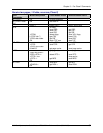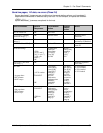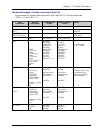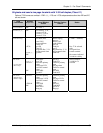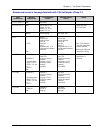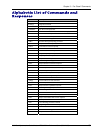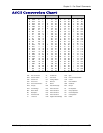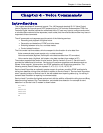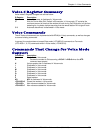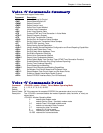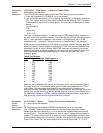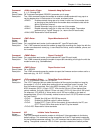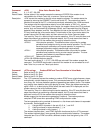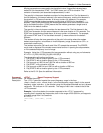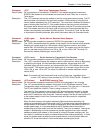
Chapter 4 – Voice Commands
Multi-Tech Systems, Inc. SocketModem MT5634SMIxx Reference Guide (S000263C) 103
Chapter 4 – Voice Commands
Introduction
This chapter describes +V command support. The +V Command standard IS-101 Voice Control
Interim Standard for Asynchronous DCE (prepared by the TIA Technical Subcommittee TR29.2 on
Facsimile Digital Interface) defines the commands that a PC user may issue to configure and control
a voice/fax/data modem and the responses (result codes) that the voice/fax/data modem may issue in
response to those commands.
The +V commands and responses provide control of the following services:
• Recording and playback of digitized voice.
• Generation and detection of DTMF and other tones.
• Switching between voice, fax, and data modes.
• Control-related functions.
The Voice mode has three states, which correspond to the direction of voice data flow:
Voice command state (event reports only; no data transfers).
Voice transmit state (digitized, half-duplex voice data transfers from PC to modem).
Voice receive state, (digitized, half-duplex voice data transfers from modem to PC).
The modem supports three levels of voice service: Service Levels A, B, and C. Service Level A
provides the lowest level of services. Service level A performs operations and detects events as
follows: Voice transmit, Voice receive, and DTMF generation and Single tone generation. The
following events (Result Codes) are reported: 3, 4, 5, 6, 9, 10, 18, 19, 23, 25.
Service Level B provides an optionally greater amount of services, providing DTMF and facsimile
calling tone detection during voice transmits in addition to Service Level A. Service Level B provides
event- reporting similar to Service Level A, but with added event reporting states (e.g., fax calling in
transmit state in addition to reporting in command state).
Service Level C provides the highest service level with the addition of facsimile calling tone and Busy
detection during receives, Dial Tone detection, and double-tone detection. An example of event
detection in a Service Level C modem is shown below:
AT+VEM=?
"C"
0A000100
0E601800
1A803840
OK



